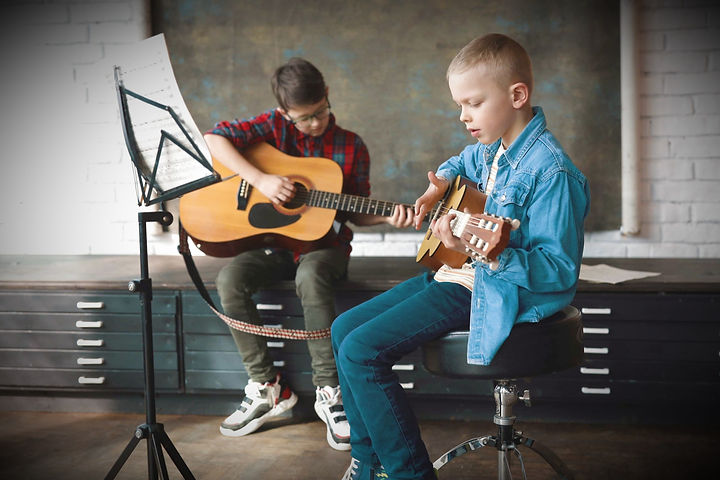PIANO, GUITAR, & DRUM LESSONS
Our music lessons are based on Music Learning Theory and focus on developing students' audiation.
Audiation is like "thinking in music". Just as you think in words when you read or speak, audiation means you hear and understand music in your mind, even when no sound is physically present. The goal is for students to become independent musical thinkers who can understand, create, improvise, read, and write music with understanding.
Tonal Audiation
Tonal audiation focuses on hearing and understanding the "home base" of a song (called the resting tone) and how all the other pitches relate to it, giving a sense of the music's overall sound quality, like major or minor.
Rhythmic Audiation
Rhythmic audiation is about feeling the steady "big beats" (macrobeats) and the faster "little beats" (microbeats) that define the pulse and meter of the music.
Why we focus on audiation
An audiation approach is considered the best way for children to learn music because it mirrors how they naturally learn language – by hearing and understanding sounds before reading symbols. This "sound before sight" method allows children to develop a deep internal comprehension of music's tonal and rhythmic patterns, rather than just memorizing notes or imitating sounds. Ultimately, this foundation leads to comprehensive music literacy and lifelong musical enjoyment, building musical understanding that goes far beyond simply decoding notes on a page.

Here's a glimpse into the topics and activities students experience in lessons.
• Pattern Instruction: Learning a music vocabulary of rhythmic and tonal patterns (like musical "words") to build understanding. These patterns are taught in different tonalities (like major or minor) and meters (like duple or triple).
• Musical Context and Content: Understanding the "home base" (tonality) and pulse (meter) of music, and the specific functions and patterns within them
• Creativity & Improvisation: Encouraging students to create their own musical ideas, improvise, and compose
• Instrumental Technique: Developing proper physical approach to the instrument, hand and arm balance, and effective finger use
• Music Literacy: Gradually introducing reading and writing music notation after establishing a solid aural foundation.
• Movement Activities: Students engage in continuous, fluid movements and pulsating movements to internalize rhythm and musical style.
• Singing & Chanting: Singing a wide variety of songs to experience different tonalities and meters.
• Listening Activities: Listening to recordings, identifying tonalities and meters, and actively listening to other students perform.
Lessons are designed for small groups of two to three students.
• Reinforcement & Review: Skills are reinforced through repetition and review as students learn from each other.
• Individual Performance: Students become comfortable performing individually in front of a small, supportive audience.
• Personalized Learning: Instructors can differentiate instruction, tailoring the difficulty of tasks to meet each student's individual needs and musical aptitude to ensure everyone is challenged appropriately.
• Assessment: Individual responses in small groups provide valuable insights into a student's internal musical understanding, allowing instructors to assess progress and plan future lessons effectively.











